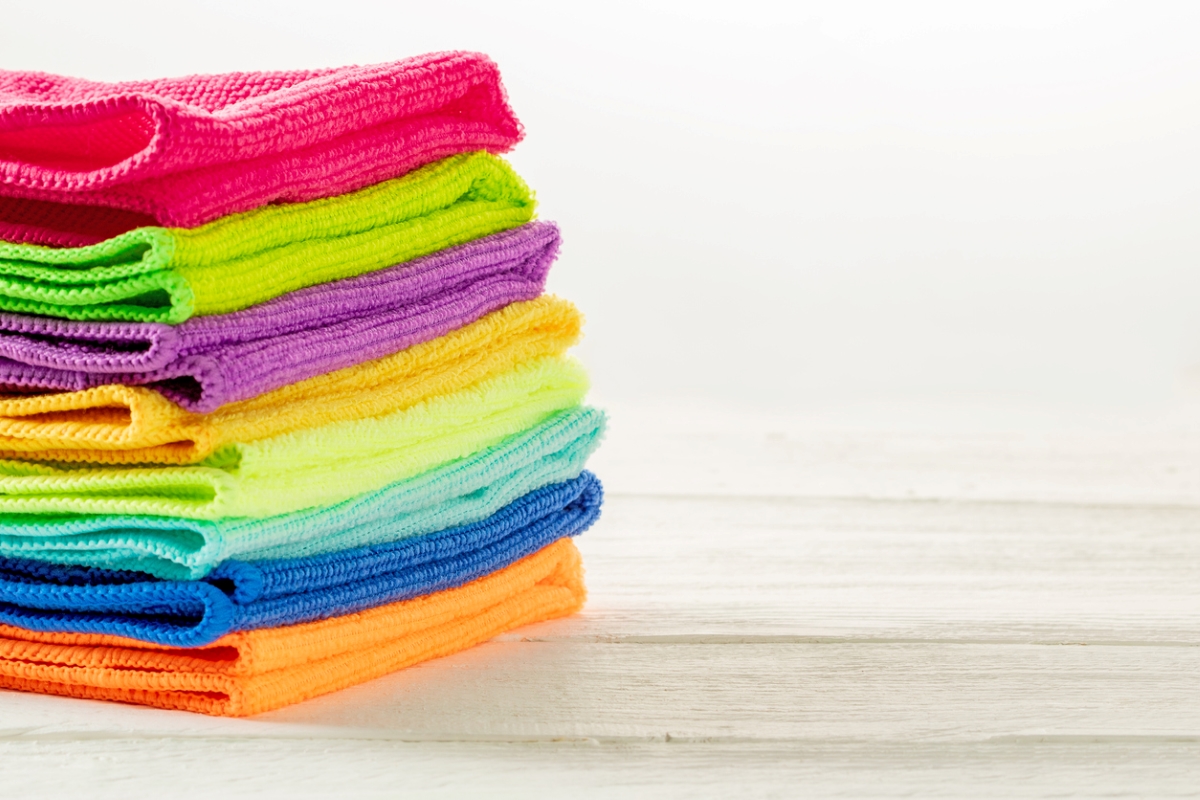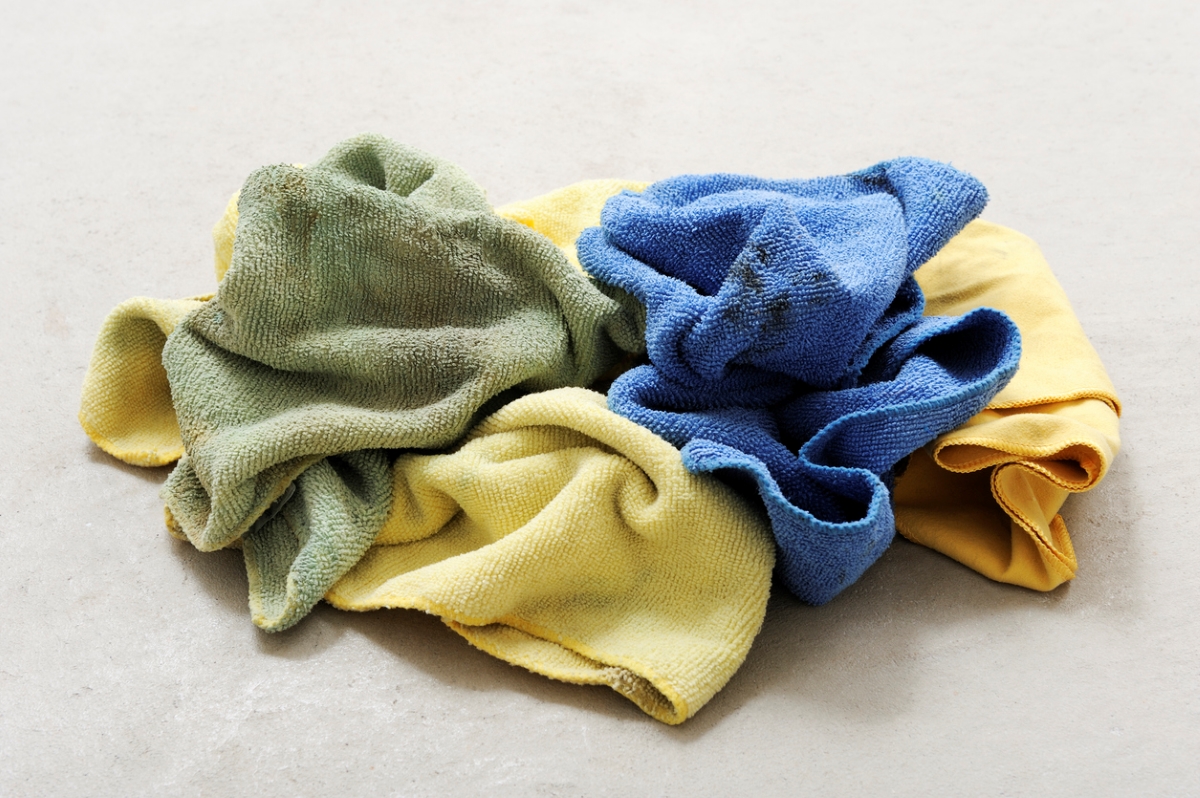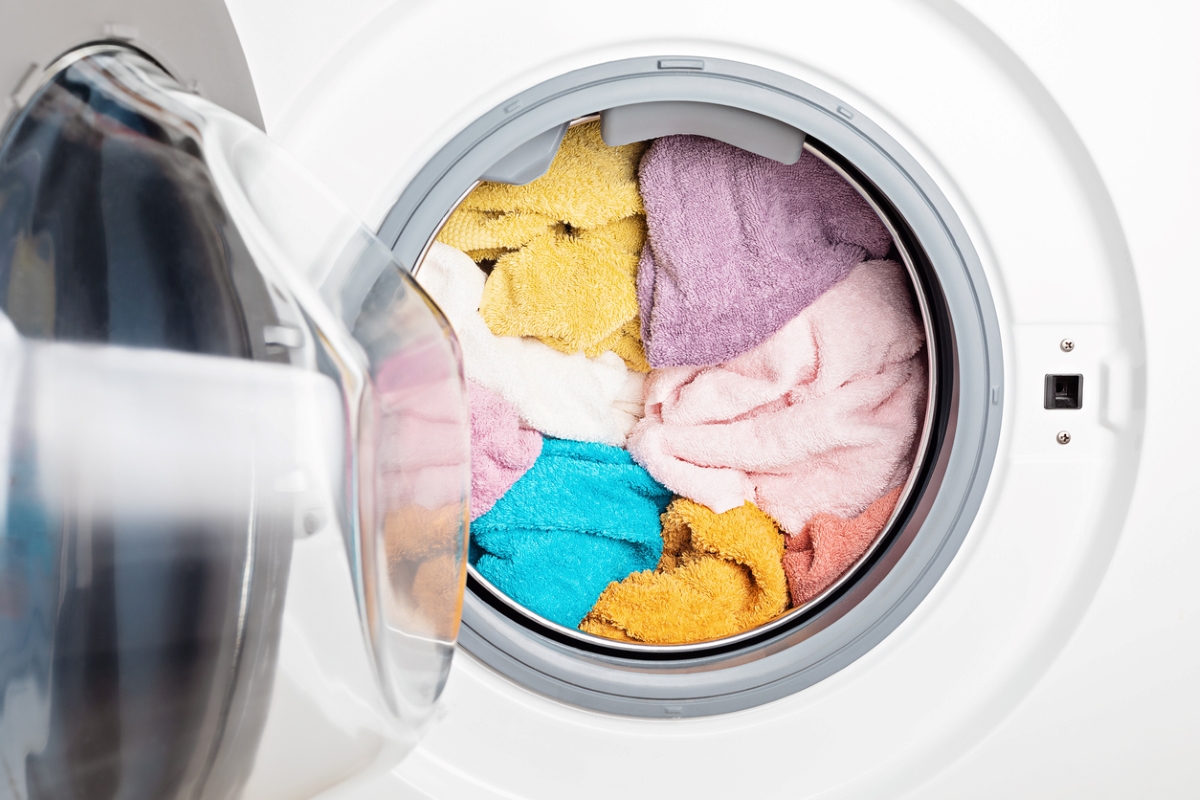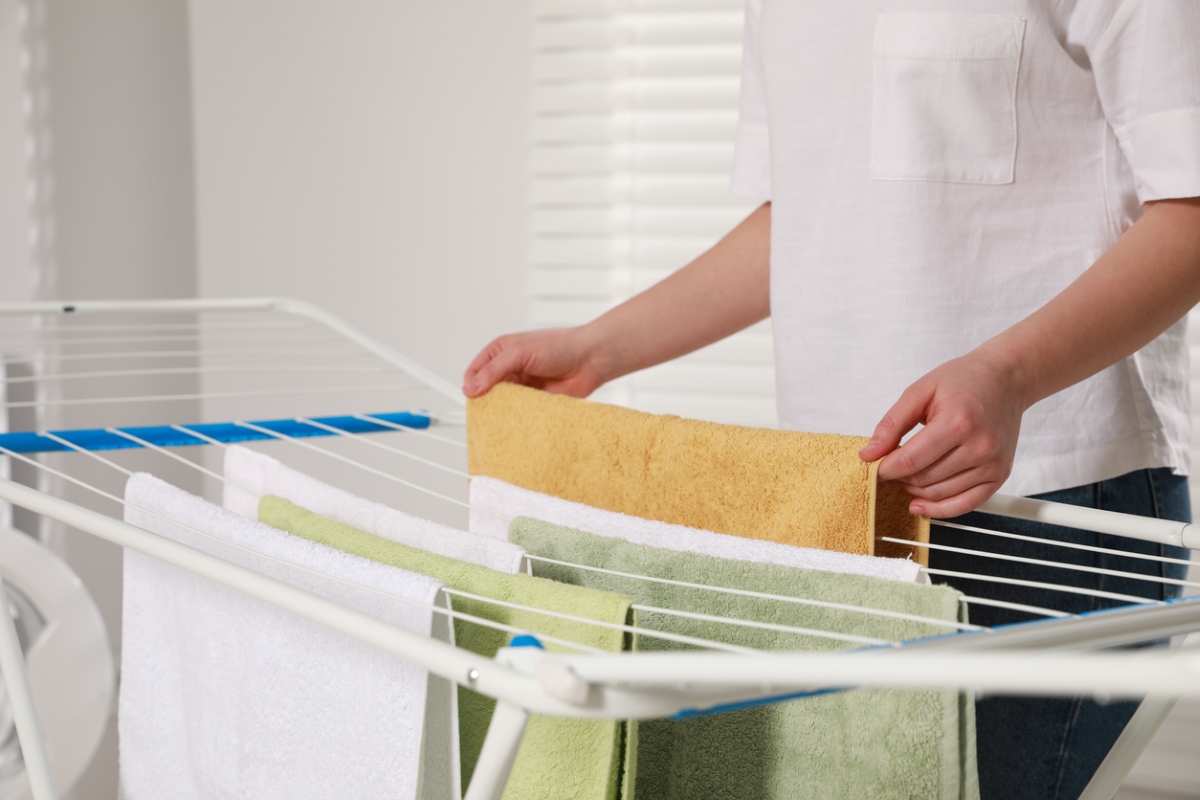

We may earn revenue from the products available on this page and participate in affiliate programs. Learn More ›
Microfiber towels are versatile cleaning tools that can help remove dust, dirt, and grime from surfaces both inside and outside of the home. Karina Toner, operations manager for Spekless, a home cleaning services company, says that microfiber cloths are a product of science and smart engineering. “Great structure, absorbency, versatility, durability, budget, and eco-friendliness are just some of the reasons microfiber cloths are considered a godsend for professional cleaners.”
However, if you don’t know how to wash microfiber towels, their seemingly miraculous abilities might diminish as the material’s absorbency or longevity wane. Similarly, learning how to dry microfiber towels properly is important for preserving them.
Tools & Materials
Bobvila.com may earn a commission from purchases made through these links.
Project Overview
Working Time: 10 to 20 minutes
Total Time: 1 to 2 hours
Skill Level: Beginner
Estimated Cost: $5 to $40
Before You Begin
As a general rule, try to wash microfiber cloths after each use to avoid transferring contaminants between different surfaces in the home. In the steps below, we’ll explain how to clean a microfiber cloth in the washing machine. This is the easiest and least time-consuming method, and the best approach for getting heavily soiled towels clean. However, it is also possible to hand-wash lightly used microfiber towels. If you choose this approach, soak the towels in a solution of cool water with 1 or 2 teaspoons of gentle detergent for about 20 minutes. Then, agitate the water to loosen dirt before rinsing the towels and hanging them to dry.
RELATED: This Is the Best Time to Do Laundry
STEP 1: Separate microfiber towels from other laundry items.

It is best to wash microfiber towels separately from other laundry items, including bath and hand towels or microfiber mop heads. In much the same way that the microfiber material attracts dust when cleaning, it attracts lint from other clothing and linens, which could negatively affect its absorbency. Moreover, because the microfiber towels are soiled from cleaning, you don’t want to transfer any of the grime they’re holding onto other laundry items.
Toner recommends having “different cloths for different tasks, like one for dusting and another for cleaning surfaces” to further avoid transferring bacteria from different surfaces in the home. “I assign different colors for different areas of the home to avoid cross-contamination,” she explains. Before placing the separated towels in the washer, be sure to shake off any loose dirt.
STEP 2: Add gentle detergent—but no fabric softener or bleach—to the washer.
Use a gentle detergent with no added fragrance when washing microfiber towels. A minimal amount of detergent will better preserve the microfiber material and ensure that soap doesn’t build up on the surface.
According to Toner, you should not add fabric softener or bleach to the washer when cleaning microfiber towels. She explains, “These softeners can leave a residue that compromises the cloth’s ability to pick up dirt and liquids effectively. Similarly, avoiding bleach is a must, as it can break down the fibers over time, reducing the overall lifespan of your microfiber cloths.”
RELATED: How to Make Your Own Laundry Detergent
STEP 3: Set the machine to a cold wash cycle.

Choosing the right settings on your washer will also help preserve your microfiber towels. You may be asking, “Can you wash microfiber towels in hot water?” While you can use warm water for heavily soiled towels, you should avoid hot water to protect the fibers from damage. For lightly soiled cloths, opt for a cold water cycle to protect the material.
STEP 4: Add 1 tablespoon of distilled white vinegar if needed for odor elimination.
Vinegar can help when cleaning microfiber towels with an odor. Pouring some distilled white vinegar into the washer before starting the cleaning cycle will work to neutralize odors. It doesn’t take much vinegar—only about a tablespoon—to break down the odors and leave the towels smelling fresh after the cycle. You can give the load an extra rinse if you’re worried about the vinegar smell lingering.
STEP 5: Air-dry the towels or choose a low-heat setting on the dryer.

In addition to understanding how to clean microfiber towels, it is important to know the best way to dry them. Toner says that when drying microfiber, “It’s all about preserving the longevity of these cloths.” She recommends air-drying them on a rack or choosing a low-heat setting for the dryer. “High heat can be detrimental to the fabric, leading to damage and reducing the cloth’s overall effectiveness,” says Toner.
If you plan to use the dryer for microfiber cloths, be sure to empty the lint trap before starting the cycle to prevent the towels from picking up lint. Avoid adding dryer sheets or dryer balls to the load to maintain the towels’ cleaning power.
Final Thoughts
When you know how to wash microfiber cloths, you will be able to maintain their absorbency and longevity. Toner says that while microfiber cloths are versatile and effective, “there are certain things you should avoid to ensure their longevity and optimal performance in cleaning.” Some of the tasks she recommends avoiding with microfiber towels are scrubbing heavy grime, cleaning objects that are sharp, wiping hot surfaces, and cleaning any oil-based stains.
With proper care and cleaning, microfiber towels can last for a few years—potentially up to 500 washes—before they need to be replaced. Replace the towels when you notice a difference in their ability to pick up dust or absorb liquids.
